Papers by Pierstefano Berta
Vignevini Rivista Italiana Di Viticoltura E Di Enologia, 2000
In questo lavoro seguiamo passo dopo passo l'iter dello studio di un marchio, le procedure per la... more In questo lavoro seguiamo passo dopo passo l'iter dello studio di un marchio, le procedure per la sua registrazione, le diverse fasi della realizzazione dell'etichetta di un vino. Si tratta di un percorso molto utile per tracciare le linee essenziali del cammino che una cantina deve seguire per progettare e proteggere secondo buone regole una nuova etichetta.
Vignevini Rivista Italiana Di Viticoltura E Di Enologia, 2003
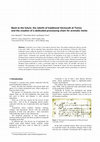
Vermouth is one of Italy’s most famous flavored wines. The product underwent explosive growth
in ... more Vermouth is one of Italy’s most famous flavored wines. The product underwent explosive growth
in the early 1800s, with an important share particularly relying on the production of Moscato. XIX-century
traditional recipes, unlike the majority of contemporary ones, involved the use of Moscato bianco di Canelli,
accounting for at least 30% of the wine in use, and were characterized by a sensory profile rich in sweet and
vanilla aromas. Vermouths were typically enjoyed at the beginning of the meal, as aperitifs. In 1998, a
Working Group composed of historians and winemakers, under the aegis of OICCE, was asked to investigate
the possibility to recreate Vermouth di Torino on the basis of XIX century recipes. Historical research has led
to the reformulation of products based on Moscato. In order to develop this fully original product concept, the
Working Group undertook to create a processing chain for aromatic herbs, all traceable and grown in
Piedmont. The preparation of the new Moscato-based "Vermouth di Torino" has led to interesting results in
terms of economic development potential for small producers, and a public interest, particularly in connection
with the development of tourism in South Piedmont.
OICCE --Gruppo di lavoro "Valorizzazione della cultura vitivinicola italiana" Corso Libertà, 65/a... more OICCE --Gruppo di lavoro "Valorizzazione della cultura vitivinicola italiana" Corso Libertà, 65/a --14053 Canelli (ASTI) ITALIA info@oicce.it L'ampelografia (dal greco ἂμπελος (ampelos) = vite + γραφὶα (grafia) = descrizione) è la disciplina che studia, identifica e classifica i vitigni attraverso la descrizione delle caratteristiche dei vari organi della pianta nel corso delle diverse fasi di crescita. La terminologia e le modalità di impiego della tecnica ampelografica descrittiva sono stabilite a livello internazionale.
per affrontare il mercato globale del vino è necessario conoscerlo, con i suoi rischi e le sue co... more per affrontare il mercato globale del vino è necessario conoscerlo, con i suoi rischi e le sue complessità.
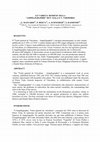
The "Traité général de Viticulture – Ampélographie" is a monumental work in seven volumes, publis... more The "Traité général de Viticulture – Ampélographie" is a monumental work in seven volumes, published between 1901 and 1910. The volumes dealing with more than 500 vine varieties represented with beautiful color plates. The work was published under the direction of Pierre Viala, General Inspector of Viticulture, in collaboration with senator Victor Vermorel.
The “Ampélographie” is a mine of practical information (the distinctive characteristics of each variety, the problems of cultivation, the intra-varietal variability, the winemaking) that
refer to the time of the survey.
It is interesting to look in the book the information on the Romanian viticulture, which, in 1800, extended to 100,000 hectares, with an annual production of about one million
hectolitres of wine. The best vineyards were those of Cotnari (Iași district), Drăgăşani (Vâlcea district) and Dealul-Mare (Prahova district).
In 2011 OICCE has set up a Working Group, dedicated to the analysis of the main issues for the fu... more In 2011 OICCE has set up a Working Group, dedicated to the analysis of the main issues for the future of the vine and wine in Piedmont (Italy). To avoid the problems inherent in the creation of a focus group, it was decided to use the Delphi method. We used this technique both in qualitative and semi-quantitative form. We collected 43 different themes, which indicate the possible points of a improuved regulation for the world of vine and wine of
Piedmont.
The two themes who collected the highest score ever and the total convergence of all the experts are:
• Establishment of structures capable of improving education in modern wine marketing.
• Creation, development and implementation of a Piedmont research network.
OT Rivista di Enologia, 2011
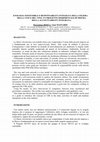
The vine and wine network is a key model for understanding the role of small businesses and it is... more The vine and wine network is a key model for understanding the role of small businesses and it is fundamental to their future survival. In order to study the process of integration we
developed a self-assessment model to analyze the business entities. Our model incorporates aspects of governance, environmental, social and economic activity, to give an overall
assessment on indicators related to sustainable development. It allows measuring the process of coming close to an ideal situation, and represents a good start for companies wishing to approach the CSR reality.
Using the model, we have interviewed 22 companies, between wine, mechanical and governance companies. The results were analyzed in a quantitative and qualitative way.
This study has shown that the principles of the Global Compact and ISO 26000 can be used as a guide to introduce the concept of CSR in the daily activities of small and medium enterprises in the wine industry.
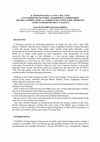
Piedmont is one of the 20 regions of Italy. It has a rich heritage of vines that are unique and t... more Piedmont is one of the 20 regions of Italy. It has a rich heritage of vines that are unique and typical of the region: Nebbiolo, Moscato Bianco, Barbera, Freisa, Grignolino, Dolcetto, Arneis, Brachetto, and many others.
These local varieties have very deep historical roots and are documented for centuries in the Piedmont wine landscape.
Some of them are mentioned since the Middle Ages, have written important pages of history and are well documented in the following centuries, until today.
Their spread and their successes have led to the guidelines of the economy and employment, as well as the physiognomy of the natural environment and landscape.
The provinces of Asti, Cuneo and Alessandria are the most extensively characterized for the wide area of vines and the wine tradition.
Our work studied Piedmont as meeting point between the ancient cultures of the Celts, Greeks, Etruscans, Romans, it follows the wine events of the Middle Ages, it analizes the history of wine in 1600 and 1700, until the great turning point of 1800 with the emergence of the wines of excellence and the great areas of vine growing.
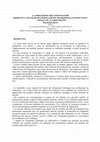
The research was aimed at supplying objective technical instruments to the producers of Grignolin... more The research was aimed at supplying objective technical instruments to the producers of Grignolino, i.e. supplying the criteria of the relationship between the winemaking techniques
and the appreciation of the products obtained, made under conditions similar to the normal market ones.
The consumers were proposed 6 pairs of wines obtained under controlled process by using for every pair the same raw material vinified with traditional methods and 6 with innovative methods: use of enzymes, cold prefermentative maceration by carbon dioxide, microoxygenation, and various concentration methods. Twenty-six meetings took place in four years of experimentation, during which we collected 930 tasting sheets.
The works made have produced a wide range of objective results, building important instruments that can be used by the producers to orient the winemaking methods of Grignolino towards the tastes of the reference market. The most important results have been:
the hedonistic analysis of the Colour, Flavour, and Aroma aspects on General Judgement; the convergence of the valuations following the wine-aging. The use of carbon dioxide in winemaking and the use of enzymes led to positive results. The concentration methods used led equivalent results.
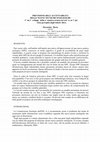
The Enology Commission of OIV has posed the problem of the communication of the new enological pr... more The Enology Commission of OIV has posed the problem of the communication of the new enological practice (NEP) to the public. It could be clearly noticed that sometimes stakeholders react with a neat refusal to the proposal of using a NEP.
In the scope of NEP, it would be useful to know in an objective way their degree of acceptability by different groups of stakeholders.
An innovating method of analysis is being proposed to reach this target.
The research had as objectives: verify if the various groups of stakeholders had a similar view of the NEP; verify the differences in the various groups of stakeholders; create a model enabling to explain the different behaviours of the groups.
Seven different groups were requested to express a general opinion about the acceptability of 13 NEP under discussion at the Enology Commission of OIV.
The comprehension and the decoding of the message were strictly linked to the ability of the subjects to master the term inside the linguistic norm and the technical competence.
All objectives to be attained received a significant answer. A model based on the classification according to qualitative variables, created by putting the answers in a bidimensional technique/risk space, allows explaining the different behaviours of the groups referring to general variables.
Some enological practices submitted to the attention of the stakeholders highlighted a wide zone of refusal, whereas some others, on the contrary, seem to be easily accepted.
These underlying differences should be taken into consideration when proposing new enological techniques.
OICCE Times, 2007
Questa disciplina innovativa è stata impiegata
per individuare degli strumenti utili ad orientar... more Questa disciplina innovativa è stata impiegata
per individuare degli strumenti utili ad orientare
la vinificazione del Grignolino verso i gusti del mercato.










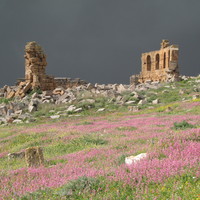
Uploads
Papers by Pierstefano Berta
in the early 1800s, with an important share particularly relying on the production of Moscato. XIX-century
traditional recipes, unlike the majority of contemporary ones, involved the use of Moscato bianco di Canelli,
accounting for at least 30% of the wine in use, and were characterized by a sensory profile rich in sweet and
vanilla aromas. Vermouths were typically enjoyed at the beginning of the meal, as aperitifs. In 1998, a
Working Group composed of historians and winemakers, under the aegis of OICCE, was asked to investigate
the possibility to recreate Vermouth di Torino on the basis of XIX century recipes. Historical research has led
to the reformulation of products based on Moscato. In order to develop this fully original product concept, the
Working Group undertook to create a processing chain for aromatic herbs, all traceable and grown in
Piedmont. The preparation of the new Moscato-based "Vermouth di Torino" has led to interesting results in
terms of economic development potential for small producers, and a public interest, particularly in connection
with the development of tourism in South Piedmont.
The “Ampélographie” is a mine of practical information (the distinctive characteristics of each variety, the problems of cultivation, the intra-varietal variability, the winemaking) that
refer to the time of the survey.
It is interesting to look in the book the information on the Romanian viticulture, which, in 1800, extended to 100,000 hectares, with an annual production of about one million
hectolitres of wine. The best vineyards were those of Cotnari (Iași district), Drăgăşani (Vâlcea district) and Dealul-Mare (Prahova district).
Piedmont.
The two themes who collected the highest score ever and the total convergence of all the experts are:
• Establishment of structures capable of improving education in modern wine marketing.
• Creation, development and implementation of a Piedmont research network.
developed a self-assessment model to analyze the business entities. Our model incorporates aspects of governance, environmental, social and economic activity, to give an overall
assessment on indicators related to sustainable development. It allows measuring the process of coming close to an ideal situation, and represents a good start for companies wishing to approach the CSR reality.
Using the model, we have interviewed 22 companies, between wine, mechanical and governance companies. The results were analyzed in a quantitative and qualitative way.
This study has shown that the principles of the Global Compact and ISO 26000 can be used as a guide to introduce the concept of CSR in the daily activities of small and medium enterprises in the wine industry.
These local varieties have very deep historical roots and are documented for centuries in the Piedmont wine landscape.
Some of them are mentioned since the Middle Ages, have written important pages of history and are well documented in the following centuries, until today.
Their spread and their successes have led to the guidelines of the economy and employment, as well as the physiognomy of the natural environment and landscape.
The provinces of Asti, Cuneo and Alessandria are the most extensively characterized for the wide area of vines and the wine tradition.
Our work studied Piedmont as meeting point between the ancient cultures of the Celts, Greeks, Etruscans, Romans, it follows the wine events of the Middle Ages, it analizes the history of wine in 1600 and 1700, until the great turning point of 1800 with the emergence of the wines of excellence and the great areas of vine growing.
and the appreciation of the products obtained, made under conditions similar to the normal market ones.
The consumers were proposed 6 pairs of wines obtained under controlled process by using for every pair the same raw material vinified with traditional methods and 6 with innovative methods: use of enzymes, cold prefermentative maceration by carbon dioxide, microoxygenation, and various concentration methods. Twenty-six meetings took place in four years of experimentation, during which we collected 930 tasting sheets.
The works made have produced a wide range of objective results, building important instruments that can be used by the producers to orient the winemaking methods of Grignolino towards the tastes of the reference market. The most important results have been:
the hedonistic analysis of the Colour, Flavour, and Aroma aspects on General Judgement; the convergence of the valuations following the wine-aging. The use of carbon dioxide in winemaking and the use of enzymes led to positive results. The concentration methods used led equivalent results.
In the scope of NEP, it would be useful to know in an objective way their degree of acceptability by different groups of stakeholders.
An innovating method of analysis is being proposed to reach this target.
The research had as objectives: verify if the various groups of stakeholders had a similar view of the NEP; verify the differences in the various groups of stakeholders; create a model enabling to explain the different behaviours of the groups.
Seven different groups were requested to express a general opinion about the acceptability of 13 NEP under discussion at the Enology Commission of OIV.
The comprehension and the decoding of the message were strictly linked to the ability of the subjects to master the term inside the linguistic norm and the technical competence.
All objectives to be attained received a significant answer. A model based on the classification according to qualitative variables, created by putting the answers in a bidimensional technique/risk space, allows explaining the different behaviours of the groups referring to general variables.
Some enological practices submitted to the attention of the stakeholders highlighted a wide zone of refusal, whereas some others, on the contrary, seem to be easily accepted.
These underlying differences should be taken into consideration when proposing new enological techniques.
per individuare degli strumenti utili ad orientare
la vinificazione del Grignolino verso i gusti del mercato.
in the early 1800s, with an important share particularly relying on the production of Moscato. XIX-century
traditional recipes, unlike the majority of contemporary ones, involved the use of Moscato bianco di Canelli,
accounting for at least 30% of the wine in use, and were characterized by a sensory profile rich in sweet and
vanilla aromas. Vermouths were typically enjoyed at the beginning of the meal, as aperitifs. In 1998, a
Working Group composed of historians and winemakers, under the aegis of OICCE, was asked to investigate
the possibility to recreate Vermouth di Torino on the basis of XIX century recipes. Historical research has led
to the reformulation of products based on Moscato. In order to develop this fully original product concept, the
Working Group undertook to create a processing chain for aromatic herbs, all traceable and grown in
Piedmont. The preparation of the new Moscato-based "Vermouth di Torino" has led to interesting results in
terms of economic development potential for small producers, and a public interest, particularly in connection
with the development of tourism in South Piedmont.
The “Ampélographie” is a mine of practical information (the distinctive characteristics of each variety, the problems of cultivation, the intra-varietal variability, the winemaking) that
refer to the time of the survey.
It is interesting to look in the book the information on the Romanian viticulture, which, in 1800, extended to 100,000 hectares, with an annual production of about one million
hectolitres of wine. The best vineyards were those of Cotnari (Iași district), Drăgăşani (Vâlcea district) and Dealul-Mare (Prahova district).
Piedmont.
The two themes who collected the highest score ever and the total convergence of all the experts are:
• Establishment of structures capable of improving education in modern wine marketing.
• Creation, development and implementation of a Piedmont research network.
developed a self-assessment model to analyze the business entities. Our model incorporates aspects of governance, environmental, social and economic activity, to give an overall
assessment on indicators related to sustainable development. It allows measuring the process of coming close to an ideal situation, and represents a good start for companies wishing to approach the CSR reality.
Using the model, we have interviewed 22 companies, between wine, mechanical and governance companies. The results were analyzed in a quantitative and qualitative way.
This study has shown that the principles of the Global Compact and ISO 26000 can be used as a guide to introduce the concept of CSR in the daily activities of small and medium enterprises in the wine industry.
These local varieties have very deep historical roots and are documented for centuries in the Piedmont wine landscape.
Some of them are mentioned since the Middle Ages, have written important pages of history and are well documented in the following centuries, until today.
Their spread and their successes have led to the guidelines of the economy and employment, as well as the physiognomy of the natural environment and landscape.
The provinces of Asti, Cuneo and Alessandria are the most extensively characterized for the wide area of vines and the wine tradition.
Our work studied Piedmont as meeting point between the ancient cultures of the Celts, Greeks, Etruscans, Romans, it follows the wine events of the Middle Ages, it analizes the history of wine in 1600 and 1700, until the great turning point of 1800 with the emergence of the wines of excellence and the great areas of vine growing.
and the appreciation of the products obtained, made under conditions similar to the normal market ones.
The consumers were proposed 6 pairs of wines obtained under controlled process by using for every pair the same raw material vinified with traditional methods and 6 with innovative methods: use of enzymes, cold prefermentative maceration by carbon dioxide, microoxygenation, and various concentration methods. Twenty-six meetings took place in four years of experimentation, during which we collected 930 tasting sheets.
The works made have produced a wide range of objective results, building important instruments that can be used by the producers to orient the winemaking methods of Grignolino towards the tastes of the reference market. The most important results have been:
the hedonistic analysis of the Colour, Flavour, and Aroma aspects on General Judgement; the convergence of the valuations following the wine-aging. The use of carbon dioxide in winemaking and the use of enzymes led to positive results. The concentration methods used led equivalent results.
In the scope of NEP, it would be useful to know in an objective way their degree of acceptability by different groups of stakeholders.
An innovating method of analysis is being proposed to reach this target.
The research had as objectives: verify if the various groups of stakeholders had a similar view of the NEP; verify the differences in the various groups of stakeholders; create a model enabling to explain the different behaviours of the groups.
Seven different groups were requested to express a general opinion about the acceptability of 13 NEP under discussion at the Enology Commission of OIV.
The comprehension and the decoding of the message were strictly linked to the ability of the subjects to master the term inside the linguistic norm and the technical competence.
All objectives to be attained received a significant answer. A model based on the classification according to qualitative variables, created by putting the answers in a bidimensional technique/risk space, allows explaining the different behaviours of the groups referring to general variables.
Some enological practices submitted to the attention of the stakeholders highlighted a wide zone of refusal, whereas some others, on the contrary, seem to be easily accepted.
These underlying differences should be taken into consideration when proposing new enological techniques.
per individuare degli strumenti utili ad orientare
la vinificazione del Grignolino verso i gusti del mercato.
Sono strumenti essenziali e preziosi per la comunicazione del vino e per la sua commercializzazione sul mercato nazionale e internazionale.
La creazione dei marchi per il vino, la loro gestione, la loro difesa è un’operazione strategica per le cantine che oggi si confrontano con un mercato complesso, non privo di insidie e di concorrenze non sempre leali.
Questo libro, per la prima volta nel panorama editoriale italiano dedicato all’Enologia, affronta tutti i temi relativi ai marchi in questo specifico, affascinante settore. Suggerisce opportune accortezze, fornisce consigli essenziali, illustra il contesto normativo che regola il mondo dei marchi nel settore enologico.
È di assoluta attualità essendo aggiornato con le modifiche legislative appena entrate in vigore in sede europea.
A fianco di una minuziosa parte teorica, ricca di esempi pratici, il libro presenta un vero e proprio “percorso” che, passo dopo passo, tocca tutte le tappe di un caso reale di scelta e registrazione di un marchio per una bottiglia di vino.
Questo libro presenta le conoscenze sui
vitigni segnalati e studiati nell’Italia del 1800.
Riunisce approfondite ricerche per tutte le aree viticole italiane, dal Nord Est al Nord Ovest, al Centro, al Sud, alle Isole.
L’importanza dei suoi contenuti è stata
riconosciuta con l’assegnazione della prestigiosa “Mention Spéciale 2014” dell’Organisation Internationale de la Vigne et du Vin.
for the 2020 SIAD international prize for innovations in the use of technical gases within the viniculture and oenology sector
With the aim of promoting research and innovation in the use of technical gases within the viniculture and oenology sector, OICCE and SIAD have established the “SIAD international prize”